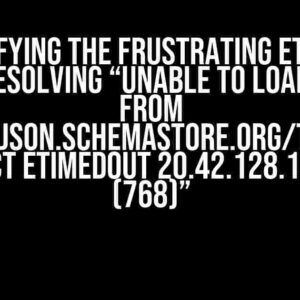Are you tired of dealing with the complexities of dynamic controls in your Angular application? Do you want to take control of your form’s behavior and simplify your code? Look no further! In this comprehensive guide, we’ll show you how to disable dynamic control in Angular, step by step.
What is Dynamic Control in Angular?
Before we dive into disabling dynamic control, let’s quickly understand what it is. In Angular, dynamic control refers to the ability of forms to dynamically add or remove controls based on certain conditions. This is achieved using the FormArray and FormGroup directives.
The Problem with Dynamic Control
While dynamic control can be powerful, it can also lead to complexity and difficulties when trying to manage form behavior. Sometimes, you may want to disable certain controls or entire forms based on specific conditions, but dynamic control can make it challenging to achieve this. That’s where disabling dynamic control comes in.
Why Disable Dynamic Control?
There are several reasons why you might want to disable dynamic control in your Angular application:
-
Simplify form behavior: By disabling dynamic control, you can regain control over your form’s behavior and simplify your code.
-
Improve performance: Dynamic control can lead to performance issues, especially when dealing with large forms. Disabling it can improve your application’s performance.
-
Enhance user experience: By disabling dynamic control, you can provide a better user experience by making it clearer which controls are available and which are not.
How to Disable Dynamic Control in Angular
Now that we’ve covered the why, let’s dive into the how. Disabling dynamic control in Angular involves a few simple steps:
Step 1: Create a Form in Angular
To disable dynamic control, you’ll need to create a form in your Angular component. You can do this using the FormGroup directive:
import { Component } from '@angular/core';
import { FormGroup, FormControl } from '@angular/forms';
@Component({
selector: 'app-example',
template: `
<form [formGroup]"myForm">
<input formControlName="name">
<input formControlName="email">
</form>
`
})
export class ExampleComponent {
myForm = new FormGroup({
name: new FormControl(''),
email: new FormControl('')
});
}
Step 2: Disable Dynamic Control using the disabled Property
Once you have a form set up, you can disable dynamic control by using the disabled property on the FormGroup or FormControl instances:
import { Component } from '@angular/core';
import { FormGroup, FormControl } from '@angular/forms';
@Component({
selector: 'app-example',
template: `
<form [formGroup]"myForm">
<input [disabled]"true" formControlName="name">
<input formControlName="email">
</form>
`
})
export class ExampleComponent {
myForm = new FormGroup({
name: new FormControl({ value: '', disabled: true }),
email: new FormControl('')
});
}
In this example, we’re disabling the name control by setting the disabled property to true. This will prevent the control from being edited by the user.
Step 3: Disable Dynamic Control using the disable() Method
Alternatively, you can disable dynamic control using the disable() method on the FormGroup or FormControl instances:
import { Component } from '@angular/core';
import { FormGroup, FormControl } from '@angular/forms';
@Component({
selector: 'app-example',
template: `
<form [formGroup]"myForm">
<input formControlName="name">
<input formControlName="email">
</form>
`
})
export class ExampleComponent {
myForm = new FormGroup({
name: new FormControl(''),
email: new FormControl('')
});
ngAfterViewInit() {
this.myForm.get('name').disable();
}
}
In this example, we’re disabling the name control using the disable() method in the ngAfterViewInit() lifecycle hook.
Disabling Dynamic Control on FormArrays
What about FormArrays? How do we disable dynamic control on those? The process is slightly different:
Step 1: Create a FormArray in Angular
First, you need to create a FormArray in your Angular component:
import { Component } from '@angular/core';
import { FormGroup, FormArray, FormControl } from '@angular/forms';
@Component({
selector: 'app-example',
template: `
<form [formGroup]"myForm">
<div formArrayName=" addresses">
<div *ngFor="let address of myForm.get('addresses').controls; let i = index">
<input [formControlName]"i">
</div>
</div>
</form>
`
})
export class ExampleComponent {
myForm = new FormGroup({
addresses: new FormArray([
new FormControl(''),
new FormControl(''),
new FormControl('')
])
});
}
Step 2: Disable Dynamic Control on FormArray using the at() Method
Next, you can disable dynamic control on individual FormArray controls using the at() method:
import { Component } from '@angular/core';
import { FormGroup, FormArray, FormControl } from '@angular/forms';
@Component({
selector: 'app-example',
template: `
<form [formGroup]"myForm">
<div formArrayName="addresses">
<div *ngFor="let address of myForm.get('addresses').controls; let i = index">
<input [formControlName]"i" [disabled]"myForm.get('addresses').at(i).disabled">
</div>
</div>
</form>
`
})
export class ExampleComponent {
myForm = new FormGroup({
addresses: new FormArray([
new FormControl({ value: '', disabled: true }),
new FormControl(''),
new FormControl('')
])
});
}
In this example, we’re disabling the first control in the FormArray using the at() method and setting the disabled property to true.
Disabling Dynamic Control using a Service
Sometimes, you may want to disable dynamic control based on some complex logic or external factors. In such cases, you can create a service to manage the form behavior:
import { Injectable } from '@angular/core';
import { FormGroup, FormControl } from '@angular/forms';
@Injectable({
providedIn: 'root'
})
export class FormService {
disableControl(form: FormGroup, controlName: string) {
form.get(controlName).disable();
}
}
In this example, we’ve created a service that provides a method to disable a control based on its name. You can then inject this service into your component and use it to disable dynamic control:
import { Component } from '@angular/core';
import { FormGroup, FormControl } from '@angular/forms';
import { FormService } from './form.service';
@Component({
selector: 'app-example',
template: `
<form [formGroup]"myForm">
<input formControlName="name">
<input formControlName="email">
</form>
`
})
export class ExampleComponent {
myForm = new FormGroup({
name: new FormControl(''),
email: new FormControl('')
});
constructor(private formService: FormService) { }
ngAfterViewInit() {
this.formService.disableControl(this.myForm, 'name');
}
}
In this example, we’re injecting the form service into our component and using it to disable the Get answers to your questions about disabling dynamic controls in Angular! In Angular, dynamic control refers to the ability to dynamically add or remove form controls based on certain conditions. You might want to disable dynamic control if you need to prevent users from modifying the form or if you want to improve performance by reducing the number of controls being rendered. You can disable dynamic control for a specific form control by setting the `[dynamicControl]` directive to `false` on the control. For example: ``. Yes, you can disable dynamic control for an entire form by setting the `[dynamicControl]` directive to `false` on the ` `. Disabling dynamic control can improve performance by reducing the number of controls being rendered, but it may also limit the flexibility of your form. Additionally, disabling dynamic control may break existing functionality that relies on dynamic control. Yes, instead of disabling dynamic control, you can use other approaches such as using template-driven forms, creating custom form controls, or leveraging Angular's `FormGroup` and `FormControl` APIs to manage form state.nameFrequently Asked Question
What is dynamic control in Angular and why would I want to disable it?
How do I disable dynamic control for a specific form control in Angular?
Can I disable dynamic control for an entire form in Angular?
What are the implications of disabling dynamic control in Angular?
Are there any alternative approaches to disabling dynamic control in Angular?





